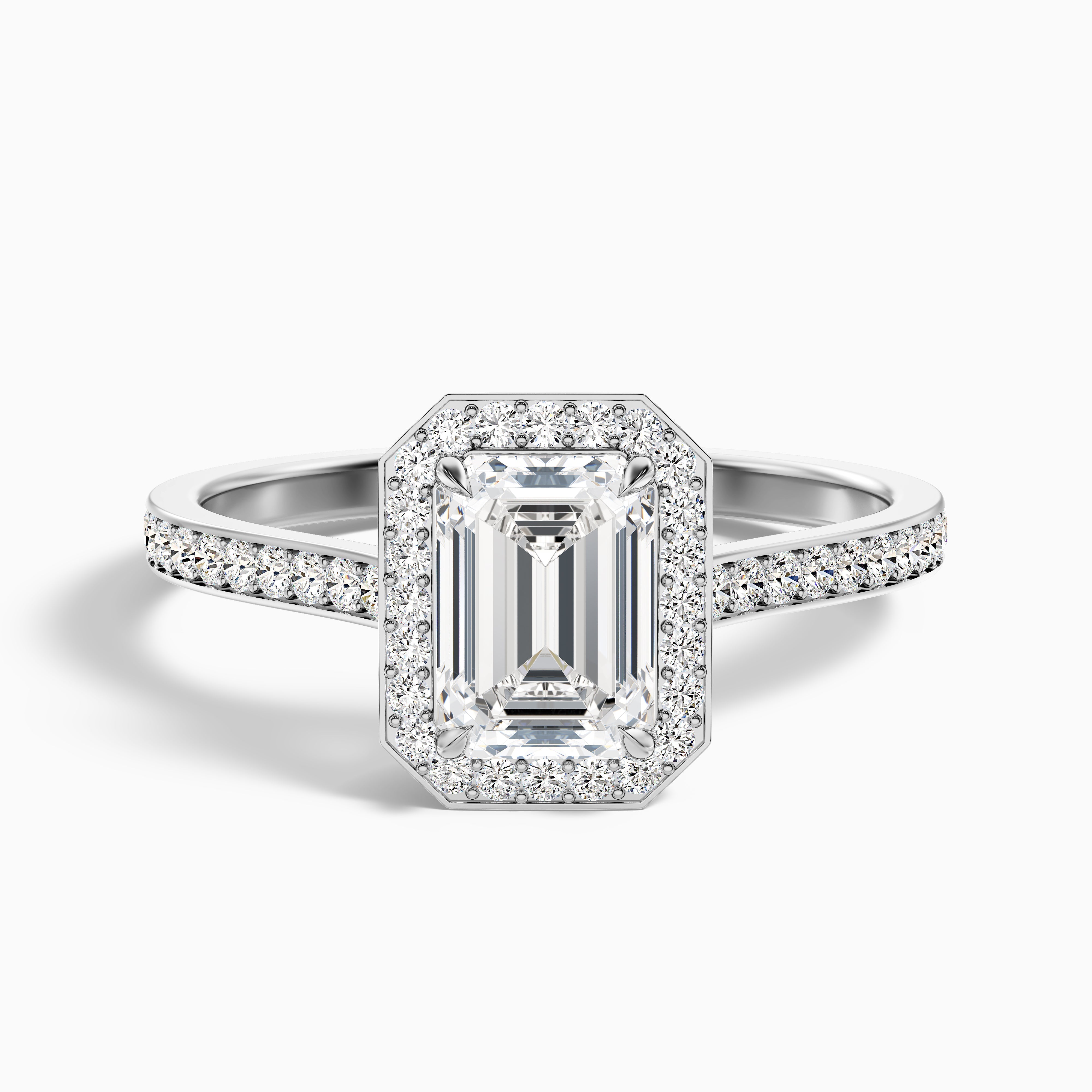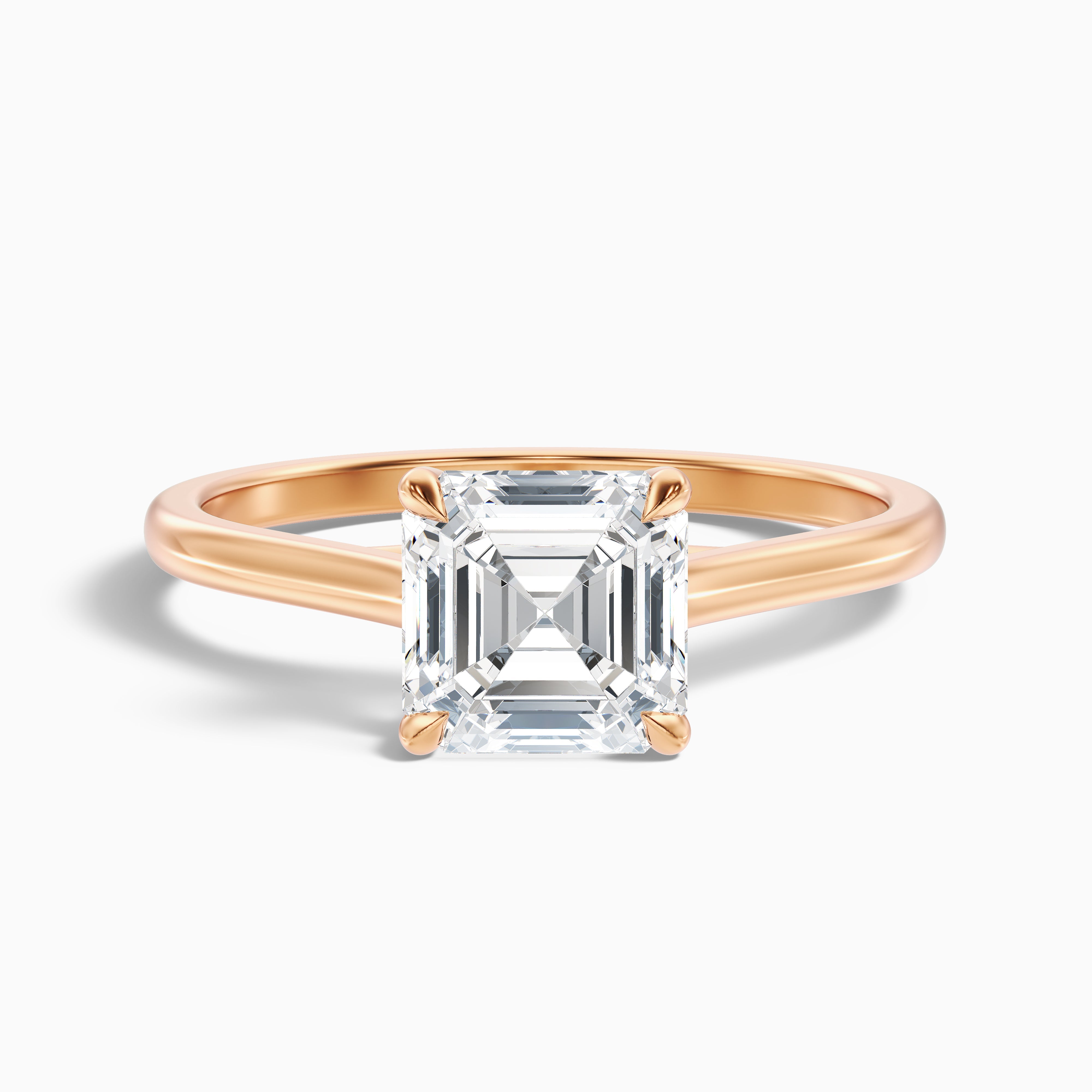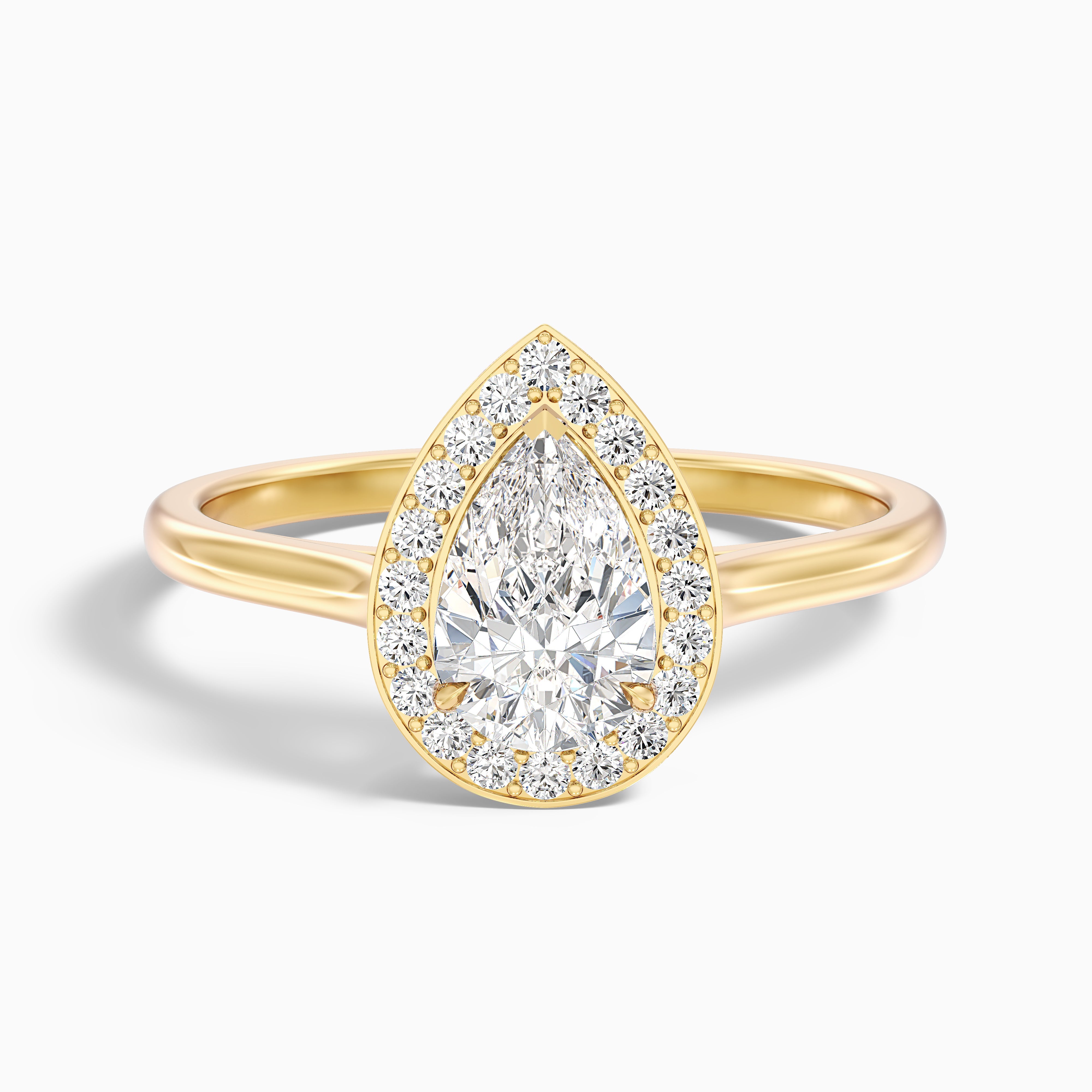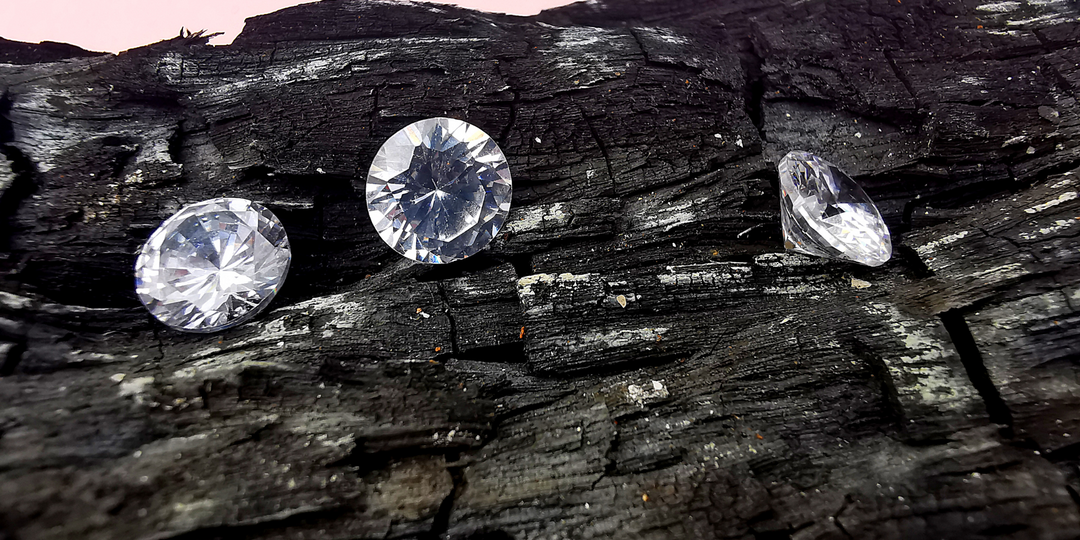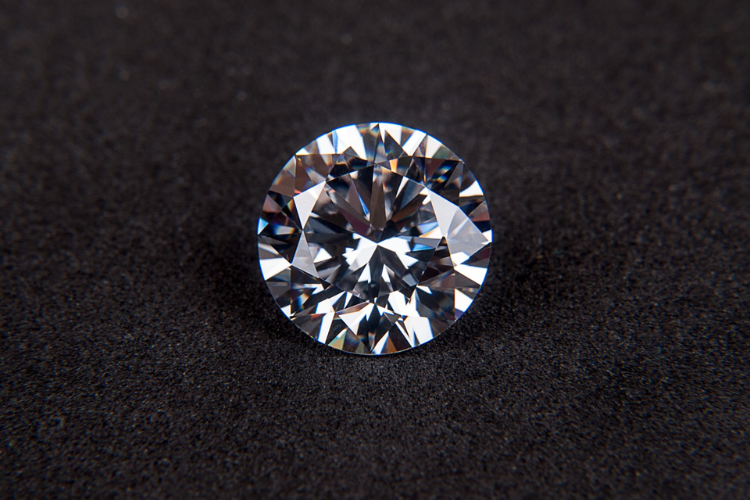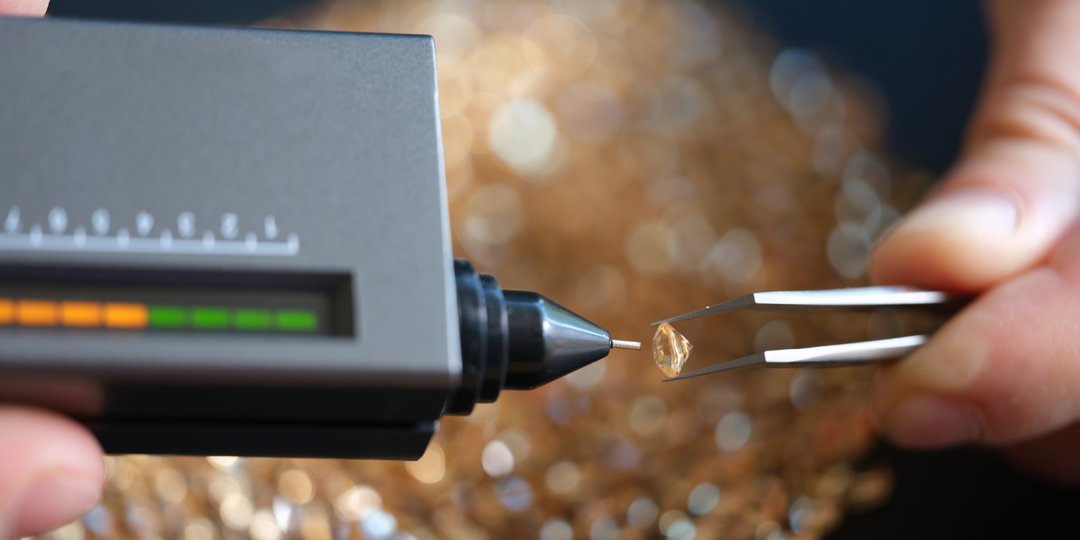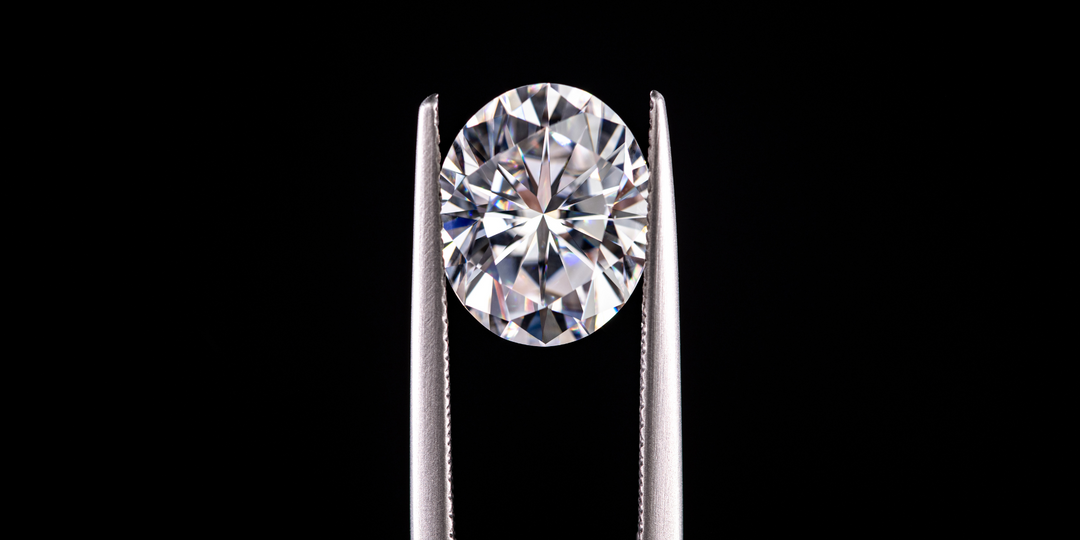Simulated Vs Lab Grown Diamonds: What are Simulated Diamonds?
Diamonds have always fascinated jewelry lovers and eco-conscious buyers. With technology advancing, we now have more options than just natural stones, like simulated and lab grown diamonds. Diamond jewelry offers versatility and affordability, fitting various budgets while still providing beauty and quality. It can be a bit confusing to choose, especially if you’re not a gemology expert!
This blog is here to clear up the differences between simulated and lab grown diamonds, so you can make an informed choice on your next sparkling purchase. Whether you want to save money, go eco-friendly, or just find something stunning, this guide has got you covered!
We'll also explore the key aspects of diamonds vs simulant diamonds and lab grown diamonds, helping you understand which option might best suit your preferences and lifestyle.
What Are Simulated Diamonds?
Diamond simulants are like the copycats of the gem world, made from different materials to look just like the real thing. Simulated diamonds are a type of diamond simulant. Unlike lab grown diamonds, which use carbon, these are made from stuff like cubic zirconia or moissanite. They’re designed to look like diamonds but are way cheaper, so they’re a hit with shoppers looking to save some money.
What Are Lab Grown Diamonds?
Lab grown diamonds, also called synthetic or cultured diamonds, are real diamonds made in a lab. They’re created by imitating the natural process of diamond formation on the Earth. Just like the ones mined from the ground, lab grown diamonds have the same chemical makeup, crystal structure, and physical traits—like hardness, sparkle, and how they handle heat.
Key Differences Between Simulated and Lab Grown Diamonds
| Aspect | Simulated Diamonds | Lab Grown Diamonds |
|---|---|---|
| Meaning | Gemstones that imitate the appearance of diamonds but are composed of different materials. | Diamonds created in a laboratory through a process that mimics natural diamond formation. |
| Chemical Composition | Various materials such as cubic zirconia, moissanite, and yttrium aluminum garnet (YAG). These materials have different chemical structures and properties compared to diamonds. | Composed primarily of carbon atoms arranged in a specific crystal structure, identical to natural diamonds. |
| Physical Properties | May differ in hardness, durability, brilliance, and other properties. For example, cubic zirconia is generally harder than moissanite but may have a slightly different sparkle. | Have the same hardness, brilliance, and durability as natural diamonds, making them indistinguishable in look and performance. In fact, they are real diamonds. |
| Ethical Considerations | Often considered more ethical than natural diamonds as they do not involve the environmental and social concerns associated with diamond mining. | Generally considered even more ethical than natural diamonds, as they are created in a laboratory without the need for mining. |
| Value | Usually lower than natural and lab grown diamonds due to their distinct composition and production methods. | Typically higher than simulated diamonds due to their identical composition and properties to natural diamonds, but lower than natural diamonds. |
| Appearance | They can look almost like real diamonds but might have slight differences in color, clarity, or sparkle. | They are real diamonds, indistinguishable from natural ones to the untrained eye, offering the same beauty and brilliance. |
| Origin | Created in a laboratory using various techniques, such as melting and cooling materials. | Grown in a laboratory through a process that replicates the conditions under which natural diamonds form deep within the Earth. |
| Applications | Primarily used in jewelry and some industrial applications. | Used in various industries, including jewelry, industrial applications (e.g., cutting tools, electronics), and even quantum computing. |
Read More: Cubic Zirconia Vs Lab Diamond: Key Differences
Pros and Cons of Simulated Diamonds
Pros:
- Less Price: Simulated diamonds are generally more affordable than natural or lab grown diamonds, making them a popular choice for those on a budget.
- Ethical Considerations: Simulated diamonds often do not involve the environmental and social concerns associated with diamond mining, making them a more ethically sound option for some consumers.
- Variety: Simulated diamonds come in a wide range of colors and styles, offering more options than natural diamonds.
Cons:
- Lower Value: Simulated diamonds are generally less valuable than natural or lab grown diamonds, meaning they may not hold their value as well over time.
- Potential for Misconception: Some people may mistake simulated diamonds for natural diamonds, leading to misunderstandings or disappointment.
- Limited Perceived Prestige: Simulated diamonds may not have the same perceived prestige as natural or lab grown diamonds, especially in certain social or cultural contexts.
- Less Durable: Simulated diamonds aren't like real ones—they lack the same properties and structure. They're less durable and can scratch or chip easily. If you wear a simulated diamond daily, it might not last more than three years. However, with occasional wear, it could last up to 10 years!
Pros and Cons of Lab Grown Diamonds
Pros:
- Ethical Choice: Lab grown diamonds do not involve the environmental and social concerns associated with diamond mining, making them a more ethically sound option for many consumers.
- Cheaper than Natural Ones: Lab grown diamonds are often more affordable than natural diamonds, especially for larger stones or specific cuts.
- Same Properties: Lab grown diamonds have the same chemical and physical properties as natural diamonds, ensuring the same brilliance, durability, and hardness.
- Customization: Lab grown diamonds can be customized to specific sizes, shapes, and colors, offering more options than natural diamonds.
- Sustainability: The production of lab grown diamonds has a lower environmental impact than diamond mining.
Cons:
- Perception: Some consumers may still associate diamonds with natural stones and may not be aware of the benefits of lab-grown diamonds.
- Lower Resale Value: While lab grown diamonds are becoming more accepted, they may not hold the same resale value as natural diamonds in some markets.
- Limited Market Recognition: The market for lab grown diamonds is still relatively new, and there may be fewer retailers or jewelers specializing in them.
- Misconceptions about Synthetic Diamonds: There are misconceptions surrounding synthetic diamonds, particularly regarding their legitimacy and differences from simulated diamonds.
Types of Simulated Diamonds: Cubic Zirconia and More
There are several types of diamond simulants, each with its own unique characteristics and benefits:
- Cubic Zirconia (CZ): This is one of the go-to options for diamond simulants. It’s super popular because of its high refractive index of 2.15-2.17, which gives it a lot of sparkle. You’ll often see CZ in engagement rings and other jewelry since it’s affordable and looks pretty close to the real deal.
- Moissanite: This natural mineral is a great diamond alternative, especially for bigger stones, thanks to its high refractive index of 2.65-2.69. It’s got some serious brilliance and comes at a fraction of the cost of diamonds.
- Yttrium Aluminum Garnet (YAG): Here’s a synthetic gemstone with a solid refractive index of 1.83-1.84 and good durability. YAG isn’t just for jewelry; it also finds its way into industrial uses from time to time.
- Rutile: With a refractive index of 2.61-2.90 and a distinct yellowish-red color, Rutile is sometimes used as a diamond stand-in. It does have more noticeable color, though, so it’s not quite as convincing as a natural diamond.
- Zircon: This natural mineral can be colorless or come in various hues. Zircon’s refractive index ranges from 1.75-1.96. While it can be used as a diamond substitute, it doesn’t quite match up to diamonds in terms of hardness and brilliance.
| Gemstone | Hardness (Mohs Scale) | Refractive Index |
|---|---|---|
| Cubic Zirconia (CZ) | 8 - 8.5 | 2.15 - 2.18 |
| Moissanite | 9.25 | 2.65 - 2.69 |
| Yttrium Aluminum Garnet (YAG) | 8.5 | 1.83 - 1.89 |
| Rutile | 6 - 6.5 | 2.62 - 2.90 |
| Zircon | 7.5 | 1.92 - 1.98 |
The refractive index of a material is a measure of how much light bends, or refracts, as it passes through the material. It is defined as the ratio of the speed of light in a vacuum to the speed of light in the material.
Are Simulated Diamonds Real? How to Spot Them
Simulated diamonds aren’t the real deal. They’re crafted to look like diamonds but made from materials like cubic zirconia or moissanite. Even though they look similar, they have different chemical and physical properties from the real thing. Unlike simulated diamonds, a synthetic diamond is man-made but shares the same chemical composition and physical properties as a natural diamond.
Want to spot a simulated diamond? Look for differences in color, clarity, brilliance, and hardness. They might show slight variations compared to natural diamonds. If you’re ever in doubt, it’s a good idea to chat with a professional gemologist.
Here are some easy ways to check if a diamond is simulated:
- The Fog Test: Hold it over a hot surface. A real diamond fogs up fast and clears quickly. A simulated one might take longer to fog and clear.
- The Heat Test: Expose the diamond to a flame briefly. A real diamond will endure the heat without any change due to its high resistance to extreme temperatures. In contrast, a simulated diamond may become cloudy or crack, unable to withstand high heat.
- The Diamond Tester: This little gadget helps tell the difference between real and simulated diamonds, but watch out—some simulated ones can trick it!
Conclusion
Choosing between simulated and lab grown diamonds comes down to your personal preferences, budget, and values. Simulated diamonds are affordable and come in various styles, while lab grown diamonds are authentic and sustainable.
Knowing these differences helps you pick what suits your style and ethics best. No matter what you decide, both options have their own unique beauty and perks. Curious about diamond alternatives? Check out our other resources and start your sparkling journey today!

